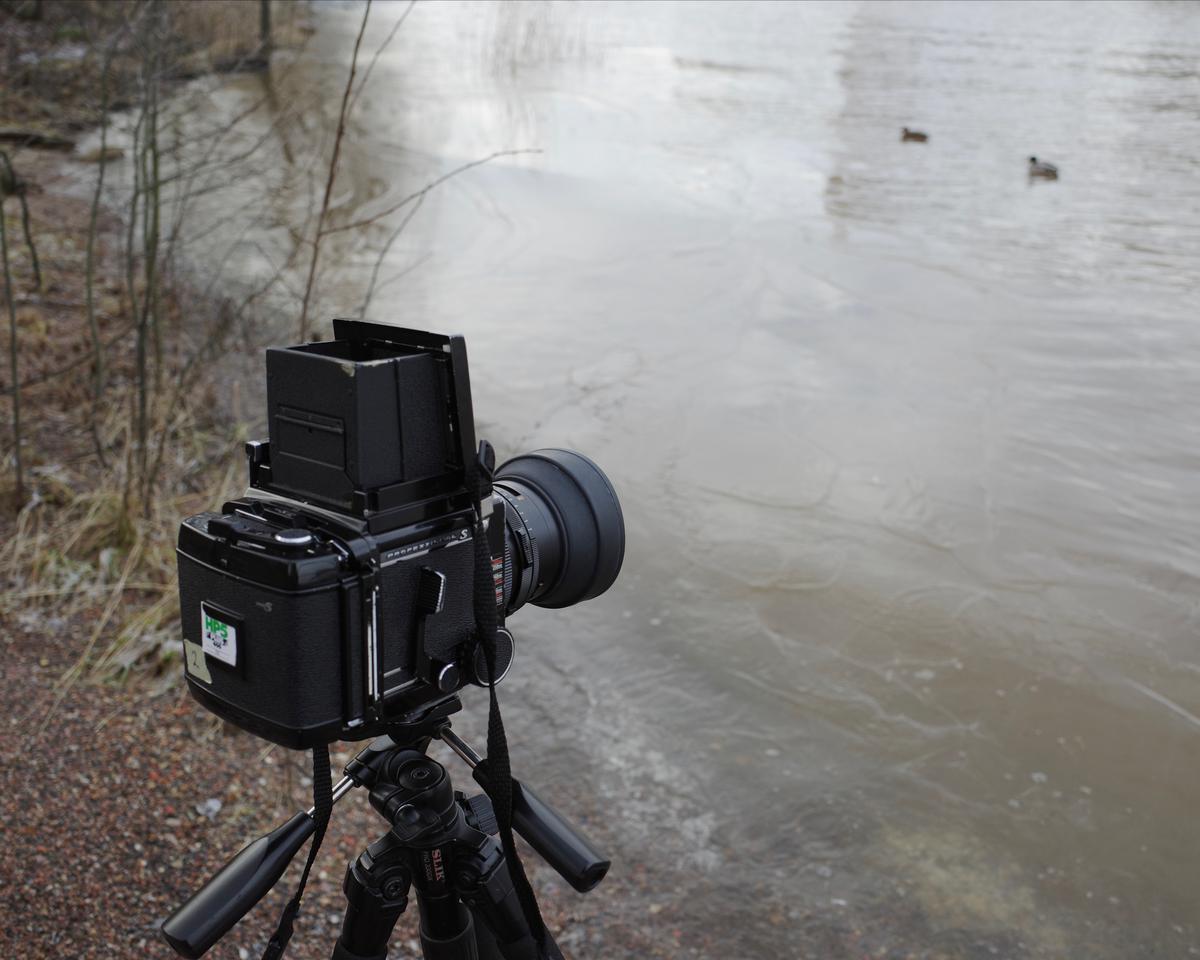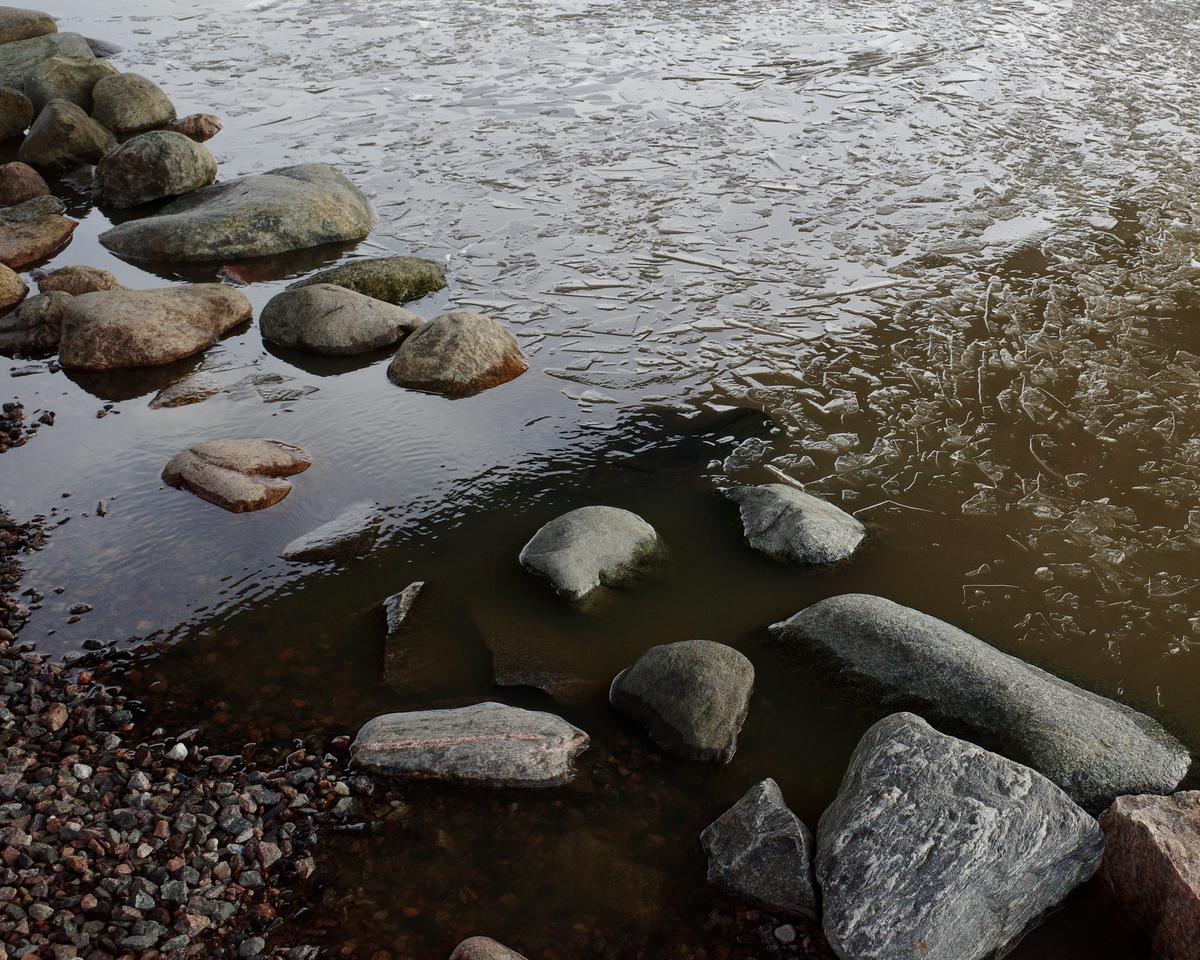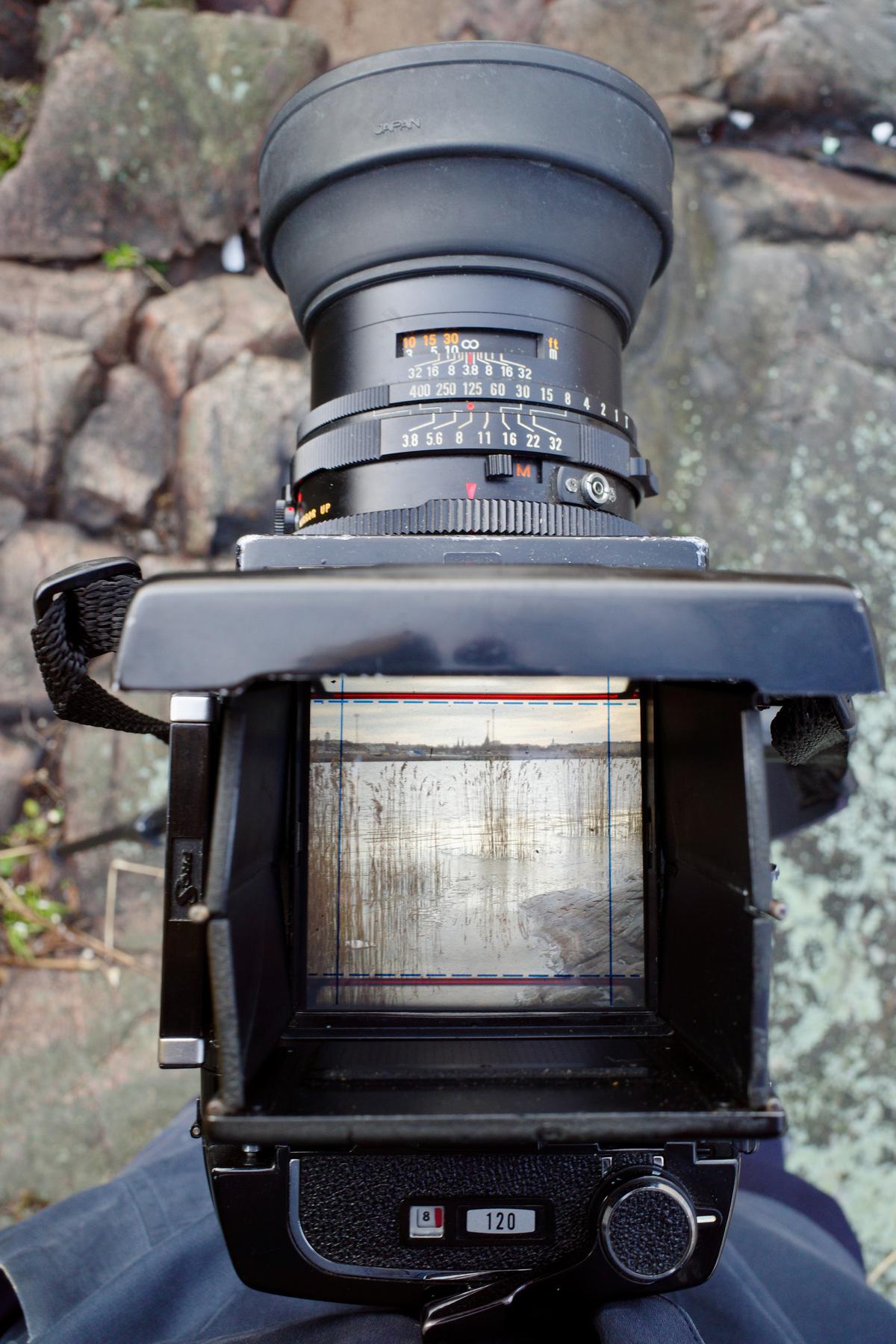
I’ve had three rolls of medium-format (120) film sitting in my fridge. They’ve been there long enough that they have all expired already. It’s black-and-white film, though, so it should be fine, especially since I’ve kept it refrigerated. I’ve shot with decade-old films and the results were okay.
The Mamiya is still with me, so I decided to finally go and shoot the films. I headed to Mustikkamaa for my “usual” set: ice, rocks, and reeds.
This winter has been unusually warm in Helsinki, so we do not have much ice. You have to crop carefully to make the small bits of ice look like a winter wonderland. At least there was enough ice under the Korkeasaari Zoo bridge to make the weird packing noises.

It was my first session with the Mamiya in two years. My usual camera is light and nimble. The Mamiya is the opposite: it’s heavy and cumbersome. It challenges you in two ways.
Every shot takes work. You have to adjust the tripod, measure the light, cock the mirror, advance the film, remove the dark slide, and, finally, trigger the shutter. It’s not cheap, either: the film and processing easily costs over 1 € per frame. You’ll want to cover every motif with as few shots as possible.
Finding a new location takes work. You have to lug around the camera and the tripod while walking on icy rocks. You’ll want to get everything out of the spot where you plop the tripod down.
This leads to slower, more deliberate photography experience. Every shot matters. You’ll focus on the composition and on shooting on the critical moment. For me, it’s a delight.
Sometimes you want to slow down. Sometimes you want to speed up. Heavy cameras have their upsides.
The photos in this post are digital, but click here to see the film shots on Flickr.
